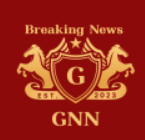Israel’s Renewed Political Rifts Take Center Stage Again
After a period of unity following the 7 October attacks by Hamas, Israel’s deep-seated political divides have resurfaced prominently. Thousands of demonstrators have once more flooded the streets, fueled by a determination to remove Benjamin Netanyahu, the nation’s longest-serving Prime Minister.
In Jerusalem, police resorted to using skunk water—a malodorous substance fired from water cannons—to disperse protesters blocking Begin Boulevard, a crucial thoroughfare.
Familiar chants demanding Netanyahu’s resignation and early elections merged with new calls for urgent action to secure the release of roughly 130 Israeli hostages still held in Gaza, some of whom are feared dead.
Among the demonstrators was Katia Amorza, who paused momentarily from her megaphone to voice her frustration: “Since eight this morning, I’m here. And now I’m telling Netanyahu that I would be glad to pay for a first-class, one-way ticket for him to leave and never return. And I’m telling him to take with him all those people he handpicked for the government, the worst of our society.”
Even as Rabbi Yehudah Glick, an advocate for Jewish prayer on the Temple Mount, passed through the crowd, he emphasized that the real adversary is Hamas, not Netanyahu: “I think he’s very popular. And that’s what aggravates these people. I think these people are not willing to forgive the fact that for so long they’ve been demonstrating against him, and he’s still in power. And I’m calling upon them to demonstrate, to come and demonstrate, speak loud and clear what they feel, but to be careful not to cross the very thin line between democracy and anarchy.”

